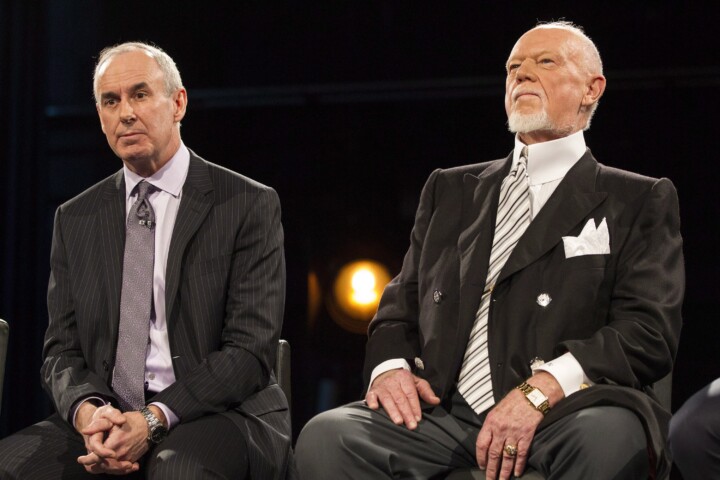As Canadian immigration policy and its economic effects receives new policy and political election, The Hub’s editor-at-large Sean Speer exchanged with University of Waterloo labour economist and leading immigration policy expert Mikal Skuterud about, among other things, the link between immigration and Canada’s disappointing GDP per capita growth.
SEAN SPEER: Do we have a sense how much the Trudeau government’s higher-than-historic immigration rates have influenced GDP growth? Is there a back of the envelope rule for the link between population growth and GDP growth?
MIKAL SKUTERUD: The historically high immigration levels Canada is experiencing in this post-COVID era are undoubtedly contributing to GDP growth. The biggest component of the increase are temporary foreign workers and international students whose labour market activity and tuition payments undoubtedly serve to boost the overall size of Canada’s economy. In the most recent quarterly data (2023 Q3) Canada’s GDP is growing at an annual rate (year-over-year) of 1 percent while the population is growing at 3 percent. How much slower GDP would be growing if the population were growing at the pre-Trudeau norm of 1 percent per year is impossible to know with any certainty. The effects of immigration on the economy are highly complex because newcomers are both consumers and producers affecting many sectors of the economy. Recessions are usually defined as two consecutive quarters of negative GDP growth. Whether exceptionally high immigration is keeping Canada out of a recession is impossible to know, but it is a possibility.
SEAN SPEER: Do we have a sense of how much population growth has contributed to falling GDP per capita? If so, should we care if it is a major factor?
MIKAL SKUTERUD: Since we don’t know how higher-than-usual population growth is contributing to GDP growth, there’s no way to know with certainty if and how much high immigration rates are the cause of falling of GDP per capita. Nonetheless, it is worth considering what current GDP growth would be under the “null hypothesis” that heightened immigration is having no effect on GDP per capita growth, either positive or negative. To do this, first note that the growth rate in GDP per capita is roughly the difference in the growth rates of GDP and the population. In the most recent data, GDP is growing at 1 percent and the population at 3 percent, so GDP per capita is falling at an annual rate of 2 percent.
If Canada had maintained its permanent and temporary immigration inflows at their 2000-2015 norms, its population would be growing at roughly 1 percent instead of 3 percent. With a population growth rate of 1 percent, GDP would have to be falling at an annual rate of 3 percent for GDP per capita to be falling at the rate of 2 percent that it is actually falling at in the most recent data. Do we believe that Canada’s GDP would be falling at a rate of 3 percent if it had maintained its immigration rates at the historical norm? The last time Canada’s economy contracted at a rate of 3 percent annually (before COVID) was in the depths of the 2008-2009 financial crisis, and before that in the depths of Canada’s exceptional recession in the early 1990s. Although these types of “counterfactual” questions are impossible to answer with certainty, I’m not seeing any economic developments inside or outside Canada that make me believe Canada would be sinking into a deep economic recession currently but for its exceptional population growth. To the contrary, the U.S. appears, if anything, in the midst of an exceptional economic boom. This suggests that heightened immigration is, at least in part, responsible for Canada’s declining per capita GDP.
There’s, of course, also good economic reason to believe that heightened immigration is contributing to falling GDP per capita. A first-order determinant of GDP per capita in any economy is average capital per worker. Capital is what allows workers to be productive, and includes everything from machinery and equipment, to factories, to highways and public transportation systems, to schools, hospitals, and housing. When the population grows at a faster rate than the capital stock, as we’re seeing now, there is less capital per worker which lowers labour productivity and average economic living standards. Second, the post-COVID era has seen the Trudeau government shift immigration policy from a longstanding prioritization of candidates with high levels of human capital and, in turn, high expected Canadian labour market earnings, to plugging holes in lower-skilled labour markets where the growth in job vacancies has been overwhelmingly concentrated. If the policy objective of immigration is to leverage immigrants to boost growth rates in GDP per capita, this policy shift is not economically sound.
SEAN SPEER: Is there a trade-off between higher GDP per capita and egalitarian concerns about distribution?
MIKAL SKUTERUD: The hypothesized relationship between GDP per capita and inequality is the known as the “Kuznets Curve.” The curve hypotheses an inverse U-shaped relationship in which countries who are in the early stages of economic development tend to see increasing levels of economic inequality up to some maximum, beyond which further advances in development tend to reduce economic inequality. It seems entirely reasonable to believe that Canada is on the downward sloping part of the Kuznets Curve where further gains in average living standards tend to benefit the most disadvantaged in society. The success of the Canada Child Benefit in reducing child poverty rates is a noteworthy example pushing us along the downward sloping part of the Kuznets Curve.
GDP per capita can be thought of as the size of the average slice of the national economic pie. When the size of the average slice is growing over time, citizens are more willing to support bigger slices for those with the smallest slices because doing so doesn’t require anyone to have less. But in an economy where the size of the average slice is decreasing, support for progressive policies can quickly turn as citizens become more focused on maintaining what they already have. In the words of a song from my youth: “the grabbing hands grab all they can.” More troubling, if heightened immigration is seen as contributing to falling GDP per capita, Canada’s historical and exceptional public support for high immigration rates risks being undermined. This, in my view, is the ultimate risk of Canada’s current immigration policy experiment.
SEAN SPEER: What if any consequences are there for a growing GDP per capita gap with the U.S.?
MIKAL SKUTERUD: As noted earlier, a key mechanism through which immigration has the potential to boost GDP per capita is through its potential to increase the average human capital of the population by attracting and retaining top international talent. One obvious risk of a growing GDP per capita gap with the U.S. is that it exacerbates Canada’s ability to attract and retain skilled workers, and not only immigrants, but also Canadian-born workers who might increasingly look to the U.S. to realize their career and economic ambitions. This is one mechanism through which declining per capita GDP can be self-perpetuating.
Recommended for You

Falice Chin: A tale of two (Poilievre) ridings

Evan Menzies: Calgary at 150: Why is it so hard to celebrate our history?

Howard Anglin: Canada is badly failing the ‘Tebbit Test’

‘We’re winning the battle of ideas’: Conservative MP Aaron Gunn on young men moving right, the fall of ‘wokeness,’ and the unraveling of Canadian identity



